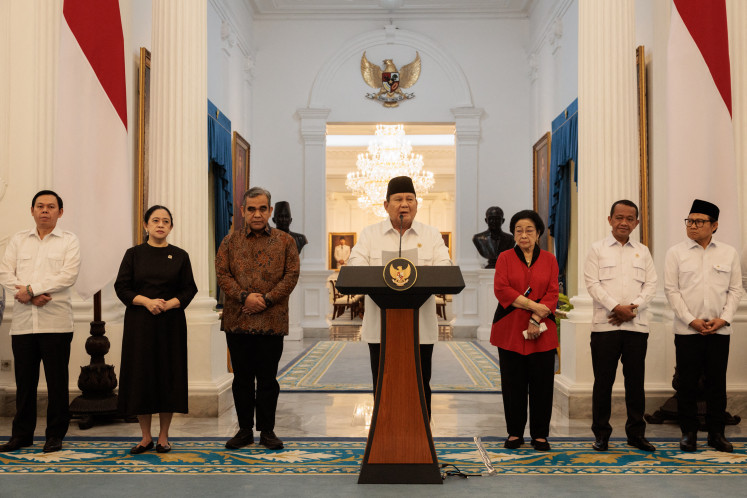Popular Reads
Top Results
Can't find what you're looking for?
View all search resultsPopular Reads
Top Results
Can't find what you're looking for?
View all search resultsASEAN local currency deals
Change text size
Gift Premium Articles
to Anyone
T
he Philippines agreed last week to join the local currency settlement (LCS) framework — which Indonesia, Thailand and Malaysia have operated over the past two years — in a bid to expand intra-ASEAN trade and investment as well as to strengthen the region’s economic integration.
The agreement between Bangko Sentral ng Pilipinas (BSP), Bank Indonesia (BI), Bank Negara Malaysia (BNM), and the Bank of Thailand (BOT) was signed on the sidelines of the ASEAN finance ministers and central bank governors meetings in Thailand last Friday. These initiatives are part of continuous efforts to promote the wider use of local currencies to facilitate and boost trade as well as investment in these countries.
But BSP has yet to appoint banks from the Philippines to join the six others in Indonesia, including three state-owned banks, as well as five each in Malaysia and Thailand to facilitate the easier implementation of trade transactions through the LCS framework.
It is worth pointing out that promoting the use of local currencies will only work if the transaction costs involved in changing one local currency to another are low enough to be worthwhile. This involves setting up direct exchange markets between various major currencies, as well as ensuring that there are sufficient liquidity and turnover.
Most importantly is that an efficient currency exchange market among the four currencies has to be developed to encourage businesses to use the LCS framework.
The 10 ASEAN countries have been integrating more in terms of trade and as the share of intraregional trade has steadily increased the region is, however, still heavily reliant on the US dollar for trade and investment transactions. It is the dominant currency not only for invoicing and settlements in intraregional transactions, but also as the reference currency for exchange rate policies and as a reserve currency. This is because ASEAN does not have a common currency such as the euro.
But the dominance of the dollar is not because people are forced to denominate their transactions in the greenback, but because it has lower risks and low transaction costs. Yet more noteworthy are the much lower exchange rate spreads for bank transfers between the dollar and most local currencies in the region.
But recent financial crises, however, have highlighted the risks of such an overdependence on the dollar, because a sudden shortage in its liquidity can affect ASEAN economies irrespective of their creditworthiness. In addition, ASEAN currencies’ asymmetric response to dollar fluctuations, which has been observed during crisis periods in the past, can have a negative impact on production networks looking to expand in the region.
Therefore, promoting the use of local currencies can be a first step in enhancing the role of ASEAN currencies and in reducing the risks of overreliance on the dollar.
The availability and reliability of data related to invoice/settlement currencies in the region also need to be improved. Such data disclosures make for good information, particularly for small and medium enterprises, which are starting to participate in cross-border transactions.










